How to Choose the par lighting for stage manufacturer and supplier in us?
- Introduction: Why choosing the right par lighting for stage manufacturer matters
- Purpose and
- Key technical criteria to evaluate par lighting for stage
- Fixture type and LED sources
- Beam angle, optics, and lenses
- Power, efficiency and thermal design
- Control protocols and connectivity
- IP rating and build quality
- Commercial and operational factors for selecting a supplier
- Certifications and compliance required in the US market
- Warranty terms and after-sales support
- MOQ, lead time and production capacity
- OEM/ODM capabilities and customization
- Quality assurance, testing and reliability checks
- Factory testing and QA processes
- Performance validation and photometric data
- Price, total cost of ownership and financing
- Upfront cost vs operational savings
- Bulk pricing, spare parts and consumables
- Logistics, freight and regulatory considerations for US importers
- Shipping options and import readiness
- Labeling and regulatory documentation
- Comparative checklist: Choosing a par lighting for stage manufacturer
- Side-by-side selection factors table
- Why LQE can be a competitive par lighting for stage partner
- Company capabilities and business intent
- Product range and market fit
- Service, cost-effectiveness and warranty
- How to validate and trial a manufacturer before committing
- Request samples and pilot orders
- Factory audit and third-party tests
- Practical negotiation tips when buying par lighting for stage
- Negotiate clear SLAs and penalties
- Ask for bundled support and training
- Conclusion: Make a balanced, data-driven choice for par lighting for stage
- Final decision checklist
- Frequently cited sources and references
- Call to action
- Next steps for procurement teams
- Appendix: Quick spec checklist for par lighting for stage purchases
- Downloadable checklist elements
Introduction: Why choosing the right par lighting for stage manufacturer matters
Purpose and
When searching for par lighting for stage manufacturers and suppliers in the US, buyers typically want actionable guidance to compare vendors, understand technical specs, verify certifications, and estimate total cost and lead time. This article focuses on helping event producers, rental houses, venue managers, integrators, and resellers find the best partner to supply high-quality LED PAR fixtures with dependable supply and support.
Key technical criteria to evaluate par lighting for stage
Fixture type and LED sources
Choose between single-color LED PARs, RGB, RGBW, or RGBAWUV versions depending on color needs. High-quality LEDs typically last 25,000–50,000 hours; many modern LEDs exceed 50,000 hours under proper thermal management. For commercial stage use, prefer fixtures that use branded LED chips (e.g., Cree, Osram) and provide CRI (Color Rendering Index) ratings when color fidelity matters.
Beam angle, optics, and lenses
Beam angles affect coverage: narrow beams (10°–25°) for specials and long throws, medium beams (25°–40°) for front washes, and wide beams (40°–60°) for stage floods. Look for manufacturers that offer interchangeable lenses or multiple beam-angle SKUs to match venue needs.
Power, efficiency and thermal design
Energy efficiency impacts operating cost. LED PAR fixtures commonly deliver similar light output to older incandescents while using up to 75%–80% less energy; thermal management (heatsinks, drivers) determines LED longevity. For US venues focused on operating costs, prioritize fixtures with efficient drivers and good heat dissipation.
Control protocols and connectivity
Ensure compatibility with DMX512 and, increasingly, Art-Net/sACN for networked control. Wireless control (W-DMX, LumenRadio) can reduce cable runs, but verify reliability and FCC compliance for US usage. Manufacturers with flexible firmware and RDM support simplify integration and maintenance.
IP rating and build quality
For indoor venues typical PARs can be IP20, but outdoor events require IP65 or higher. Check enclosure materials (die-cast aluminum preferred) and mechanical durability for frequent rigging and touring use.
Commercial and operational factors for selecting a supplier
Certifications and compliance required in the US market
US buyers should confirm UL or ETL listing for electrical safety, FCC compliance for wireless modules, and RoHS for hazardous substance control. CE is common for international trade but not a substitute for UL/ETL in the US market. Verified safety listings reduce liability and simplify venue acceptance.
Warranty terms and after-sales support
Look for minimum 2–3 year warranty on electronics and at least 1 year on LED engines; 3–5 years is common for higher-end fixtures. Critical keywords: par lighting for stage warranty, replacement policy, and technical support turnaround time are essential for rental companies and venues.
MOQ, lead time and production capacity
Understand minimum order quantities (MOQ), standard lead times, and peak-season delays. A manufacturer with scalable production (e.g., annual capacity > tens of thousands of units) can better support large projects and recurrent orders. For example, LQE’s production base supports up to 100,000 fixtures annually, helping maintain supply continuity for US partners.
OEM/ODM capabilities and customization
If you need branded fixtures, unique optics, or custom firmware, verify the manufacturer’s OEM/ODM experience. Suppliers offering complete design-for-manufacture, custom lenses, and firmware customization will reduce development time for private-label or spec-driven projects.
Quality assurance, testing and reliability checks
Factory testing and QA processes
Ask manufacturers about in-line testing, aging/ burn-in procedures (typical burn-in: 24–72 hours), thermal cycling, vibration testing for touring gear, and photometric testing with integrating spheres or goniophotometers. Documented QA reduces early failures and warranty claims.
Performance validation and photometric data
Require photometric reports (lumen output, lux at distances, beam angle, distribution) and spectral power distribution (SPD) if color fidelity is critical. These data help spec the correct par lighting for stage to meet designers’ expectations and venue lux targets.
Price, total cost of ownership and financing
Upfront cost vs operational savings
While LED PARs often cost more upfront than legacy fixtures, savings in energy consumption (often 60%–80% lower than incandescent equivalents) and reduced maintenance (LED lifespan) usually produce a lower total cost of ownership. If budget constraints are tight, evaluate financing, leasing, or staged procurement to spread capital costs.
Bulk pricing, spare parts and consumables
Confirm pricing tiers for volume orders, availability and lead time for spare parts (drivers, lenses, power supplies), and whether the supplier offers accessory kits (barndoors, gel frames, yokes) at scale discounts. For rental houses, rapid access to spares reduces downtime and revenue loss.
Logistics, freight and regulatory considerations for US importers
Shipping options and import readiness
Choose suppliers familiar with export documentation (CE/EMC reports, packing lists, commercial invoices) and US customs clearance. For predictable supply, consider FOB/CIF options and a supplier who can coordinate sea and air freight with insurance.
Labeling and regulatory documentation
Ensure the manufacturer supplies required labeling (UL/ETL marks where applicable), FCC statements for wireless products, and safety datasheets (MSDS/REACH/RoHS declarations) to comply with US procurement rules and venue safety requirements.
Comparative checklist: Choosing a par lighting for stage manufacturer
Side-by-side selection factors table
Compare candidate manufacturers across the most important dimensions below to convert subjective impressions into objective decisions.
| Selection Factor | Why it matters | Ideal buyer requirement |
|---|---|---|
| Certifications | Safety and regulatory acceptance in US venues | UL/ETL listed, FCC for wireless, RoHS |
| Production capacity | Ability to meet large orders and replenish stock | 10,000+ units/year for medium suppliers; LQE: 100,000 units/year |
| Warranty & Support | Protects buyer from early failures and reduces downtime | 3-year electronics warranty recommended for rentals |
| Technical data | Ensures fixture meets lighting design targets | Photometric reports, SPD, beam angles, DMX docs |
| OEM/ODM | Needed for private-labeling and customization | Proven OEM projects, engineering support, NDA capability |
| Lead time & MOQ | Affects project scheduling and inventory cost | Clear lead-time commitments; flexible MOQ for pilots |
Why LQE can be a competitive par lighting for stage partner
Company capabilities and business intent
LQE, founded in 2008 and headquartered in Foshan, China, specializes in OEM/ODM high-end digital stage lighting. With a production base of about 10,000 m², an annual capacity up to 100,000 fixtures, and 80 national patents, LQE is positioned to support large-scale US orders while offering customization and steady supply.
Product range and market fit
LQE’s product line includes moving heads and static lights suitable for theaters, concert stages, studios, houses of worship, exhibitions, nightclubs, theme parks, and more—matching the purchasing needs of US integrators and rental companies seeking versatile par lighting for stage options.
Service, cost-effectiveness and warranty
LQE emphasizes modern manufacturing practices, first-class customer service and industry-competitive pricing. For buyers focused on value and long-term reliability, LQE offers OEM/ODM flexibility, standard warranty terms, and the production scale to provide spare parts and ongoing support.
How to validate and trial a manufacturer before committing
Request samples and pilot orders
Always request 1–3 sample units for photometric checks, DMX integration tests, and physical handling. A short pilot order (small MOQ) reveals real-world performance and supplier responsiveness.
Factory audit and third-party tests
For large contracts, commission a factory audit (quality systems, labor standards, production flow) and consider third-party testing labs for UL/ETL verification, photometrics, and EMC compliance. Documented third-party results increase confidence during procurement sign-off.
Practical negotiation tips when buying par lighting for stage
Negotiate clear SLAs and penalties
Define service level agreements (SLAs) for lead times, defect rates, response time for spare parts, and penalties for missed deliveries. Clear SLAs align supplier incentives and protect your project timeline.
Ask for bundled support and training
Request training materials, firmware tools, diagnostic guides, and spare parts kits as part of the package. Many suppliers will include documentation or on-site commissioning for larger orders.
Conclusion: Make a balanced, data-driven choice for par lighting for stage
Final decision checklist
Prioritize vendors that combine certified, reliable hardware (UL/ETL, FCC), verifiable photometric performance, firm warranty and support, reasonable lead times, and OEM/ODM flexibility. For US buyers seeking a partner with strong production capabilities and customization, LQE is a qualified option to evaluate based on its capacity, patent portfolio, and industry focus.
Frequently cited sources and references
- U.S. Department of Energy (DOE) — guidance on LED efficiency and lifespan
- ENERGY STAR — consumer guidance on LED lighting efficiency
- Underwriters Laboratories (UL) — product safety standards for electrical equipment
- Intertek (ETL) — testing and certification service information
- Illuminating Engineering Society (IES) — photometric testing and lighting design guidance
- Federal Communications Commission (FCC) — wireless device compliance and rules
- LQE company data provided: founded 2008, headquartered in Foshan, 10,000 m² facility, 100,000 units/year capacity, 80 national patents
Call to action
Next steps for procurement teams
If you are comparing multiple suppliers for par lighting for stage, prepare a short RFP including required photometric specs, certifications, warranty expectations, MOQ, and target lead time. Ask for sample units and a factory reference. If you'd like a supplier with strong OEM/ODM capability and high production capacity, consider contacting LQE to discuss custom requirements and volume pricing.
Appendix: Quick spec checklist for par lighting for stage purchases
Downloadable checklist elements
Essential items to request in RFPs: photometric report, SPD, beam angle options, LED brand/chip info, driver specs, DMX/network features, wireless module FCC documentation, UL/ETL certificates, warranty terms, spare parts list, MOQ, lead time, pricing tiers, OEM/ODM options.
Best stage lighting equipment manufacturers and supplier brands in us
Where to Buy professional stage lighting
Top stage & lighting Manufacturers and Suppliers in us
Top stage light Manufacturers and Suppliers
1000w
What Is the Warranty Offered by LQE Lighting?
LQE lighting offers a comprehensive 1-year warranty and spare parts on its products, giving customers peace of mind and investment protection.
Do You Supply After-Sale Service?
LQE lighting offers 7x24 hrs systematic SOP customer support with dedicated personnel, ensuring quick and comprehensive assistance for stage lighting needs.
What Kind of Certificates You Offer?
All kinds of certificates could be offered by LQE digital moving light factory, which depends on customer’s required, different pricing plan for different approval.
Does LQE Offer Customized Stage Moving Light Solution?
An experienced R&D team can provide customized digital stage lighting OEM/ODM solution service to meet clients’ unique demands from global markets, such as customized CRI parameter, Ingress protection rating, effect, etc.
Can I Have a Sample Order for an LED DJ Light?
Sure, sample order are welcome to test and check LQE quality. Mixed samples are acceptable.
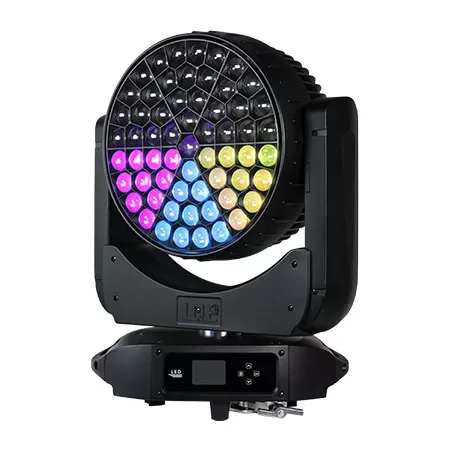
1000w 61x40w RGBW Stage Moving Head Wash Light LW1000
1000W 61x40W LED RGBW Mulichips Moving Head Wash Lights with Zoom (5°–50°), Covering Large Range and Long Distance. Designed to deliver a 5°–50° ultra-large zoom range to achieve a greater wash effect, illuminating stages and events with stunning lighting effects.

600w 19x40w RGBW Stage Moving Head Wash Light LW600 Zoom IP20
600W 19x40W LED RGBW Mulichips Moving Head Wash Lights with Zoom (5°–50°), Covering Large Range and Long Distance. IP20: Designed to deliver a 5°–50° ultra-large zoom range to achieve a greater wash effect, illuminating stages and events with stunning ring control lighting effects.

LED Moving Head Stage Wash Light LW200Z
The versatile moving head stage light provides a powerful lighting solution for theaters, concerts, and large outdoor performances. Suitable for theaters, TV stations, entertainment stages, and large outdoor performance scenes.
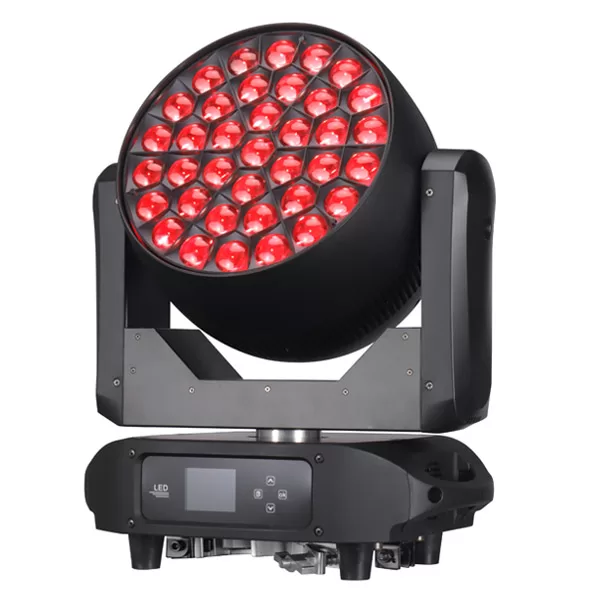
800w 37x40w RGBW Stage Moving Head Wash Light LW800
800W 37x40W LED RGBW Mulichips Moving Head Wash Lights with Zoom (5°-50°), Covering Large Range and Long Distance. Designed to deliver a 5°–50° ultra-large zoom range to achieve a greater wash effect, illuminating stages and events with stunning ring control lighting effects.

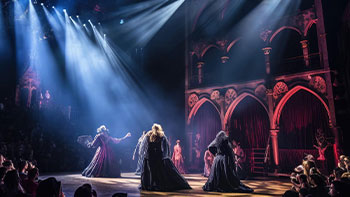
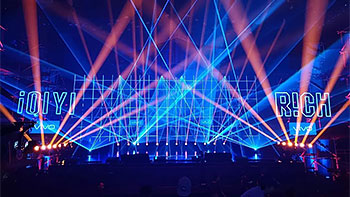

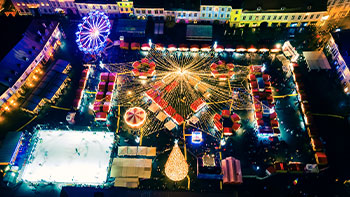








Linkedin
YouTube
Whatsapp: +8618924548390
TikTok